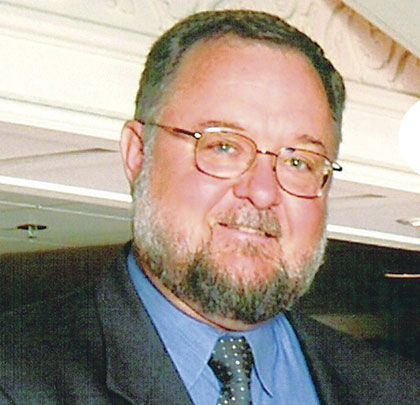2017 is around the corner and I project some significant changes that will impact the servicing and care of our fleet and stationary equipment.
MAJOR SHIFT IN CMMS SOFTWARE PROGRAMS
First, there will be a major shift in software products such as Computerized Maintenance Management Systems (CMMS) as they embrace more reliability features in addition to the current maintenance support features. Many software publishers have been working on beefing up the capabilities of the work management and maintenance information capabilities of their maintenance modules. They have come to the realization that as their customers and prospective customers become more educated, they need to not only enhance the maintenance side of the CMMS, but begin to really address the reliability side of the program. As a result, the ability to easily measure MTBF, MTTR, MTBPM, along with setting accurate PCR (Problem-Cause-Remedy) Tree capabilities will be forthcoming in more competitive products. At the same time, “old school” programs will continue to offer the same old maintenance scheduling and tracking regime.
IMPROVED SUPPORT FOR PLANT CMMS
There will be a heavier emphasis on plant support for CMMS system this coming year. This will include the ability to create taxonomies or hierarchical equipment-component relationships in plants for tracking costs, failure patterns, etc. Another important aspect is that contemporary CMMS will enable the ability to track Predictive Maintenance (PdM) technology applications, such as trending patterns and reading changing conditions. This will include the application of a PdM Technology Matrix that maps all the PdM applications across a plant. These applications have long been applied in other industries and are in the forefront of crossovers to the construction industry. Many current CMMS programs do not have a robust means to provide support for these today.
EXPANDING TELEMATICS
Telematics will continue to expand with broadened applications being identified in 2017. By 2017, the global construction equipment market is estimated to be sized at around $192 billion. This represents numerous opportunities to automate and apply these strategies even more efficiently than 2015 and 2016.
THE GROWTH OF STRUCTURED OPERATOR CARE PROGRAMS ACROSS INDUSTRIES
Formalized or Structured Operator Care will continue to expand in companies as they realize that trained operators can detect up to 70-75 percent of all failures in advance. This is coupled with a solid frontline care program of CLAIRE (Cleaning, Lubricating, Adjusting, Inspecting, Repair, and Eliminating) using training, standards, audits, rewards, and others means to engage the workforce in taking pride and ownership in the equipment.
GREATER ADOPTION OF PLANNING AND SCHEDULING
2017 will see more companies embrace Planning and Scheduling as they see the value in prepping the job prior to execution of non-emergency work. On average, the traditional heavy equipment maintenance shop maintenance operation wrench time or productivity level is between 30 and 35 percent. Planning and scheduling, on average, almost doubles that productivity to 50-60 percent though efficiency gains. More companies are seeing the value in having Planner/Schedulers prepping and scheduling PMs, Corrective Maintenance work in advance. We expect to see that increase this year.
BETTER ON-ROAD CHECKS
There will be more means for authentication to ensure on-road daily pre-and post-checks. Devices like Zonar have been used to maintain compliance integrity for daily on-road checks with electronically verified inspections. They revolutionized the way pre- and post-trip inspections are conducted. It is now ELD capable.
PROGRESSION OF PAPERLESS PM
Another application will be the remote access devices for conducting PM activities in the field and shop as companies move toward paperless activities. One of our clients has successfully adapted CAT Inspects to conduct PMs such as 125 Hour, 250 Hour, 500 Hour, etc. Using an iPad and laminated references for grease fittings, etc., the tech performs the PM task by task. Instead of the traditional weak “Check this…” and “Check that…” the specs or tolerances are shown. Responses are color-coded to indicate the level of acceptance while marginal or failed tasks are surfaced to the top at the end of the inspection protocol so they can be addressed. This has eliminated volumes of paper on clipboards or worse, reliance on unreliable memories or recall. ■
For More Information: Preston Ingalls is president and CEO of TBR Strategies, LLC, a Raleigh, North Carolina-based maintenance and reliability firm specializing in the construction and oil and gas industries. Preston can be reached at pingalls@tbr-strategies.com, or visit www.tbr-strategies.com. Come see Preston at ConExpo and at the AEMP Conference in Las Vegas the first week in March. He is scheduled to speak on multiple topics ranging from Operator Care, to using the P-F Curve, to Proxy Techs.
_________________________________________________________________________
Modern Contractor Solutions – December 2016
Did you enjoy this article?
Subscribe to the FREE Digital Edition of Modern Contractor Solutions magazine.

Expect Big Changes in 2017


